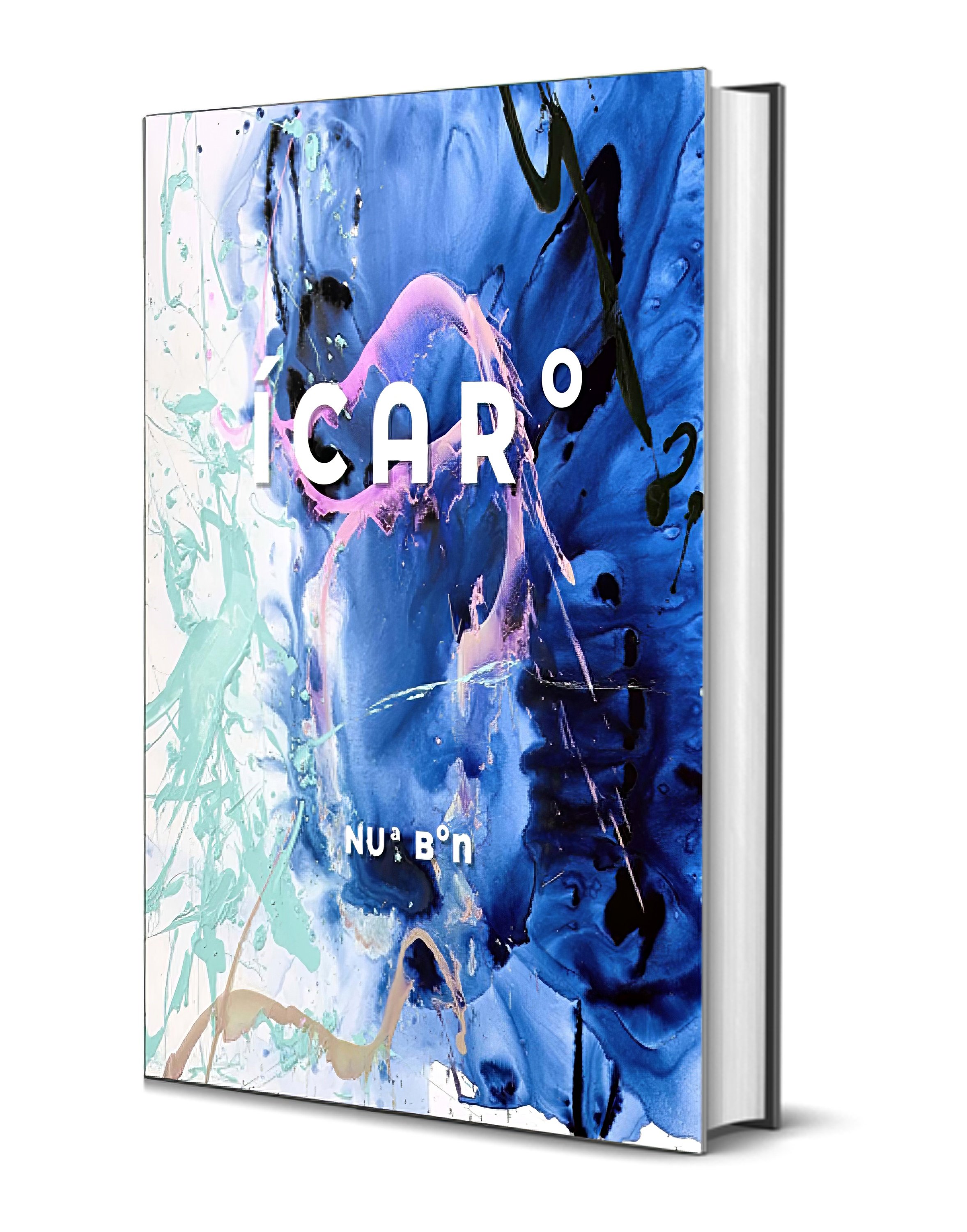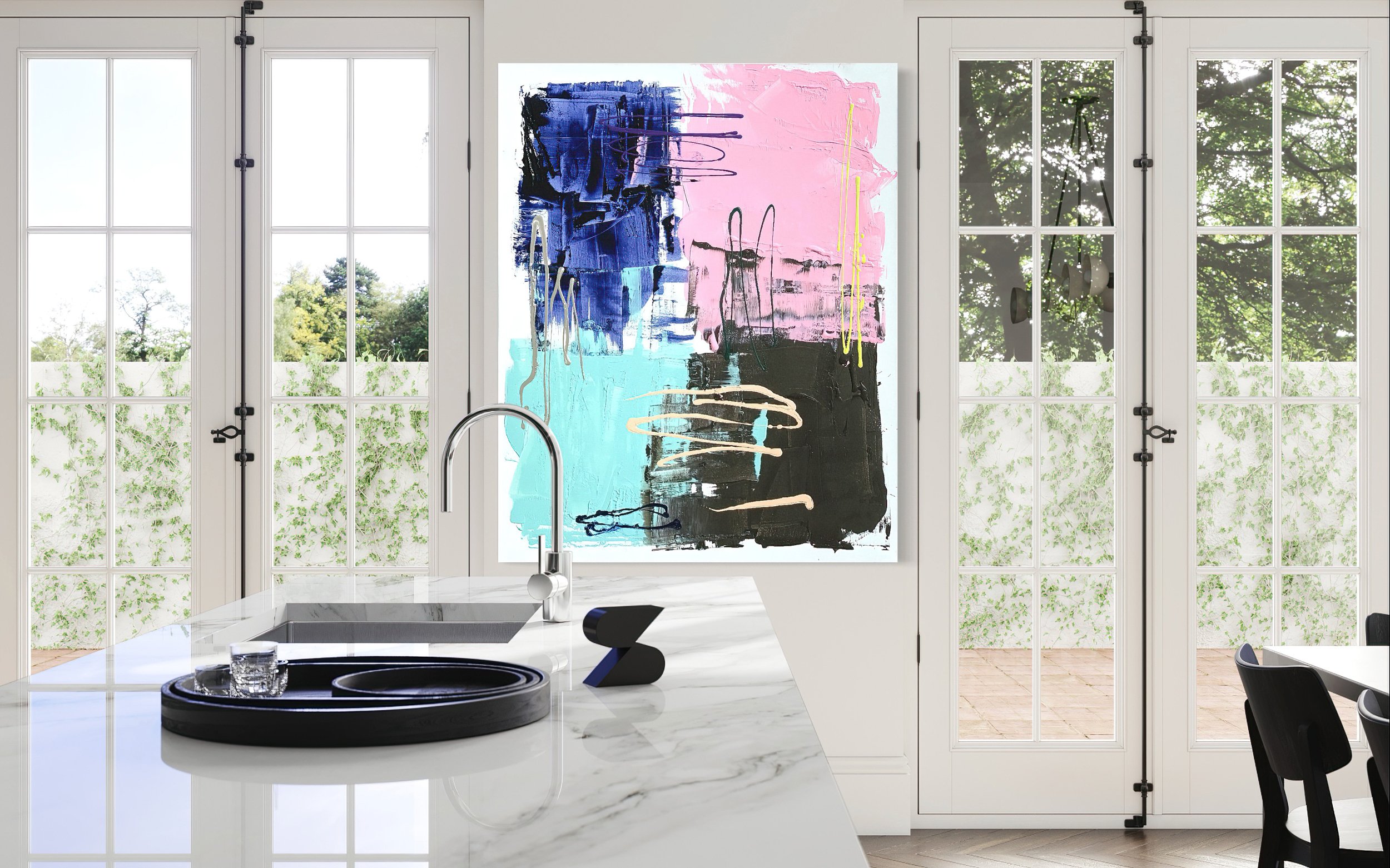Beyond Reductionism: Abstracting the Western Narrative through Art, Legacy, and Reinterpretation
The vast expanse of the American West has been a perennial source of inspiration for countless artists. Traditional Western art, notably depicted by figures such as Maxfield Parrish and Thomas Moran, offers a romanticised, often reductionist, view of this magnificent region. Such depictions, mainly Moran's, played a pivotal role in propelling the ideals of 'Manifest Destiny', casting the West as a majestic, wild realm waiting for the touch of "civilisation". While aesthetically captivating, these perspectives often eclipse the nuanced tales of the West, particularly those of its Indigenous communities.
As a counterpoint to this dominant narrative, abstraction emerges as a profound artistic voice. Visionaries like Georgia O'Keeffe, whose evocative depictions of New Mexico landscapes and flowers became iconic; Agnes Martin, whose tranquil grids resonate with the vastness of New Mexico, Beatrice Mandelman, with her infusion of Southwestern light and native motifs; and John McLaughlin’s minimalist ruminations, have reshaped the artistic lens through which we view the West. Their innovative approaches carve a path for contemporary artists like myself to traverse. Guided by these trailblazers, my immersion into abstraction aims for a deeper, multi-layered connection with the West. It becomes more than a stylistic choice; it's a vessel to navigate the West's intricate histories, emotions, and narratives. Each abstract brushstroke is an invitation to challenge, expand, and reinterpret age-old tales, urging audiences to engage in a vibrant dialogue with the artwork.
Embedded within this abstract language are the stories of the Pueblos of New Mexico and the Hopi mesa-top villages of Arizona that embody the West's rich history, their confrontations with colonialism, and their determined spirit. Abstraction becomes a medium to unearth and convey these tales, crystallising the very soul of the West on canvas beyond the limitations of traditional portrayals. The groundbreaking work of contemporary Indigenous artists further elevates this dialogue. Jeffrey Gibson, for instance, masterfully amalgamates traditional Indigenous motifs, such as weavings and pottery, with modern artistic elements, crafting a nexus between yesteryears and the contemporary. Similarly, Jaune Quick-To-See Smith's abstract pieces poignantly intertwine her Salish heritage with modern-day experiences, while Maria Martinez's innovative pottery designs, though not strictly abstract, play with forms that nod to age-old Pueblo motifs yet feel timeless in their appeal, and younger indigenous artists like Marla Allison and Nani Chacon continue this evolution. The foundational work of artists like O’Keeffe, Martin, Mandelman, McLaughlin, Gibson, Smith, and Martinez illuminates the path for ongoing exploration. Through abstraction, my art pays homage to their legacy and contributes to the dynamic, ever-evolving discourse on the West. It is a tribute to those visionaries who ventured beyond conventions, ensuring the multifaceted sagas of the West remain indelibly etched in the annals of art.
Zuni (A:shiwi) Pueblo, New Mexico, 44 x 88 in, clay and acrylic on linen, 2023
Picuris Pueblo (Tewa: P'įwweltha, meaning "mountain warrior place”), New Mexico, 44 x 88 in, clay, tumbleweed char, and acrylic on linen, 2023
(Press image to link to project PDF)
Kené: The Visual Language of Nature
The cultural and aesthetic essence of kené is rooted in healing visions and meditations on the energy pathways inherent in nature. This understanding is deeply ingrained in the Shipibo, as well as other tribal traditions of the Amazon Basin in South America. Such designs powerfully convey the profound bond between humanity and the natural world. Accompanied by medicinal songs, these intricate patterns are revealed to both male and female cultural practitioners during specialized plant medicine ceremonies. Often, these rituals involve psychotropic substances, leading participants to experience vivid hallucinations and shifts in consciousness. The kené represents a sophisticated cosmology with inspirations drawn from nature, profound and reverential observations of the environment, wildlife, the Milky Way, the unique topography of the jungle, and beyond.
Over two decades, Nu’a Bon meticulously crafted this work, which encompasses over 900 distinct images. These span the ethnobotanies of the canoe plants of Pasifika, the medicinal and food plants of the Americas and their seasonal variations, and the healing plants of Africa. His journey was deeply personal, stemming from a quest for meaning after the devastating loss of his cherished wife and creative companion, Mei Lien, in 2000. This magnum opus serves as a heartfelt homage to the luminous beauty she imparted to the world.
ícaro: An Exploration of Art, History, and Healing
UA Flight 93 Crash Site (2001) Shanksville, Pennsylvania, 66 x 99 in, acrylic on linen, 2016
ícaro: An Exploration of Art, History, and Healing invites audiences on a sensory odyssey across North America's vast landscapes through the eyes and hands of artist and writer Nu’a Bon (b. 1954, Hawai’i). This decade-long endeavour was not a journey measured in miles (though they were many, spanning from Mexico to Canada) but in the profound intimacy of experiencing places scarred by conflict and disaster. Bon's artwork—part performance, part abstract painting—transcends the conventionally passive, commodified canvas. Instead, it breathes life into shared experiences and meticulously researched narratives, transforming art from merely observed to a communal encounter. Bon's work manifests a rich tapestry of influences, from his diasporic Asian Pasifika heritage to the teachings of plant spirit healers in the Amazon and Africa. His métier has been shaped by luminaries such as Pierre Soulages, Ansel Adams, and Minor White, culminating in his ícaro: medicine songs cycle. Here, Bon takes the ethereal—ícaros, or healing songs—and translates them into tangible visual prayers. Each painting sings with the spiritual echo of its geographic birthplace. The exhibition offers a performance installation featuring a select narrative from the ícaro cycle. These narratives span six centuries, connecting the ancient Mesoamerican Trade Routes with the haunting contemporary narrative of Canada's Highway of Tears, notorious for its history of missing and murdered indigenous women and children. Bon invites the audience into his artistic process in the gallery space, creating a new painting live. The spiritual soundscape of recorded sounds from nature and ícaro chants accentuates the visual journey. A collection of antique kené, the visual manifestation of ícaros produced by elder curanderas, indigenous healers, offers an enduring, tactile connection to the spiritual essence of Bon's work. In ícaro: An Exploration of Art, History, and Healing, viewers are invited to explore shared human experience and historical resonance. It reveals the power of art to heal, unify, and reclaim narratives, using the shared space of community as the canvas.
PRE-PUBLICATION PDFs
Disclaimer: The content provided on this platform may include pre-publication books or drafts. These materials are intended for review purposes only and are not intended for distribution, copying, or any commercial use. You agree to respect the authors’ and publishers’ intellectual property rights by accessing or downloading these pre-publication materials. Please be aware that the content may contain errors, inaccuracies, or inconsistencies, as it has not yet undergone the complete editorial and review process. The final published version may differ significantly from the pre-publication materials provided here. Best viewed on a computer screen; smartphone, not so much.
Freedom grapples with historical injustices and the ongoing pursuit of recognition, equality, and justice for the marginalized and the disenfranchised.
The People, the endonym the Diné (Navajo) people of the US southwest use to identify themselves, is a treatise on the experiences of the indigenous peoples of the Americas over the past 600 years before European colonisation to today.
Black delves into the lives and experiences of non-White individuals who were either forcibly enslaved and made to labour without pay or have arrived in the Americas by choice, often driven by desperation. This monograph celebrates these communities’ courage, sacrifice, and determination to overcome adversity and find a place in the sun.
Earth focuses on sites of natural and human-made disasters, highlighting the impact of human activity on the environment. Coming Fall 2023
Tapestry narrates the stories of journeying on new paths, crossing borders, and exploring the realms between real and imaginary lands and how these paths are threads or strings of yarn that, when interwoven, become the fabric of cultures and societies. Coming Fall 2023
Chinoiserie (1994-2004)
publication Winter 2023
Suzhou, China, 2004
Sumo Do, Sumo Don’t, East Village, New York City, 2017
Zeitgeist
publication September 2023
Paris, France, 2005
“Looking at Bon’s images, we think about a collection of small magnets we buy as souvenirs from our visits to various places. The aesthetic choices, the transformation of reality through post-processing, the variety of approaches, and the representative content of each place support the above interpretation. There is artificiality in the appearance of the images and a mixture of pop art, pictorial, traditional, and futuristic features that define their identity. At the same time, it is clear that his subjective view of America is based on stereotypes, symbols, and landscapes or scenes that attract his interest. Despite the individuality of images and their unique aesthetic, when they are together, they work like pieces of a puzzle creating the big picture that is a multi-faced picture of America. Of course, this is a success because America is multi-faced.”
—Lensculture Critic’s Choice 2023
Umwelt (1999-2017)
publication September 2023
Amargosa Opera House (1925), Death Valley, California
To German philosopher Martin Heidegger, umwelt is that aspect of Dasein (being in the world) that is constituted by a person’s engagement with the world immediately around him or her. The umwelt differs from the zeitgeist, which is transitory by its nature. In its ranks are pop culture figures, pop economic theories like the J-curve, trickle-down economics, fashion, and the fallen billionaire or dictator of the day. The zeitgeist provides a sort of tabloid framework for viewing history, and it has its place. Everyday life for most people, however, is much more about the alltagsgeschinchte, the history of the everyday, and about the umwelt, the things in our ordinary lives that surround us. Over the years, Bon wandered the Rio de Janeiro favela, the Soweto shanty towns, homeless encampments in urban centres across the Americas and Europe, and impoverished Indian reservations in North America.









































